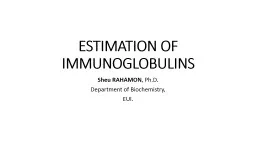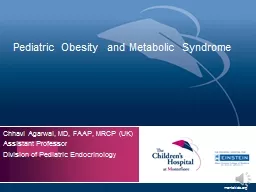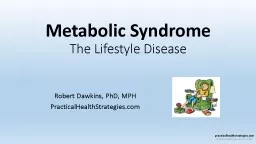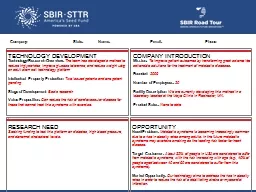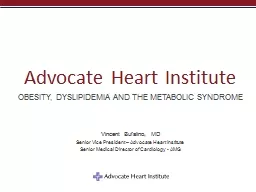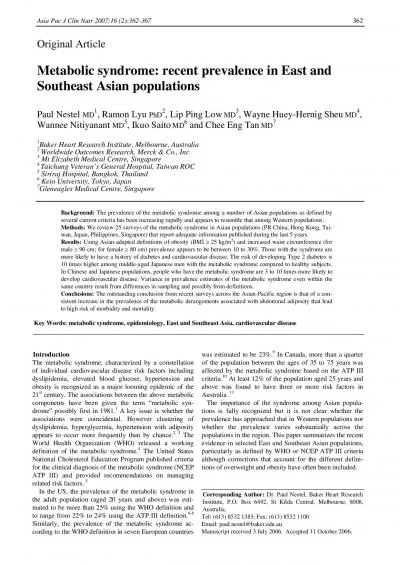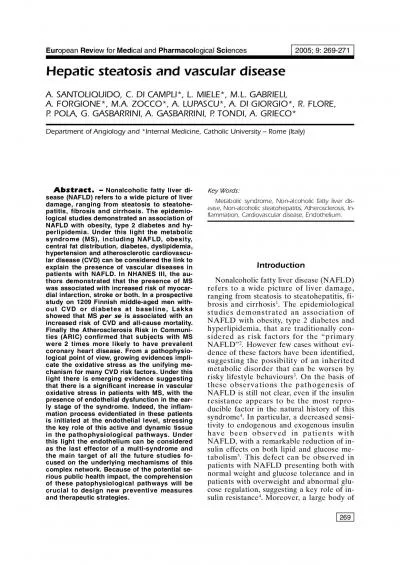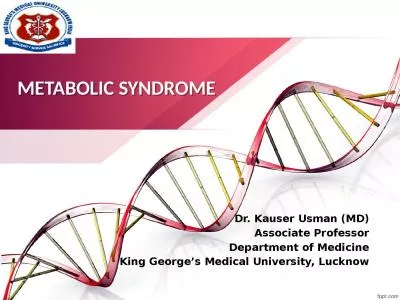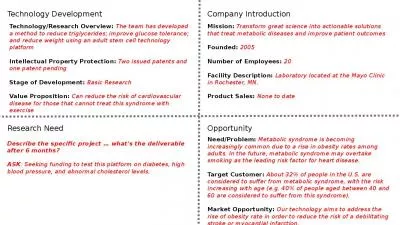PPT-METABOLIC SYNDROME Sheu K. RAHAMON
Author : DynamicDiva | Published Date : 2022-08-03
BSc Ilorin MSc PhD Ibadan Department of Biochemistry EUI OUTLINE Definition Prevalence of MS Diseases associated with MS Pathophysiology of MS Positive energy
Presentation Embed Code
Download Presentation
Download Presentation The PPT/PDF document "METABOLIC SYNDROME Sheu K. RAHAMON" is the property of its rightful owner. Permission is granted to download and print the materials on this website for personal, non-commercial use only, and to display it on your personal computer provided you do not modify the materials and that you retain all copyright notices contained in the materials. By downloading content from our website, you accept the terms of this agreement.
METABOLIC SYNDROME Sheu K. RAHAMON: Transcript
Download Rules Of Document
"METABOLIC SYNDROME Sheu K. RAHAMON"The content belongs to its owner. You may download and print it for personal use, without modification, and keep all copyright notices. By downloading, you agree to these terms.
Related Documents

